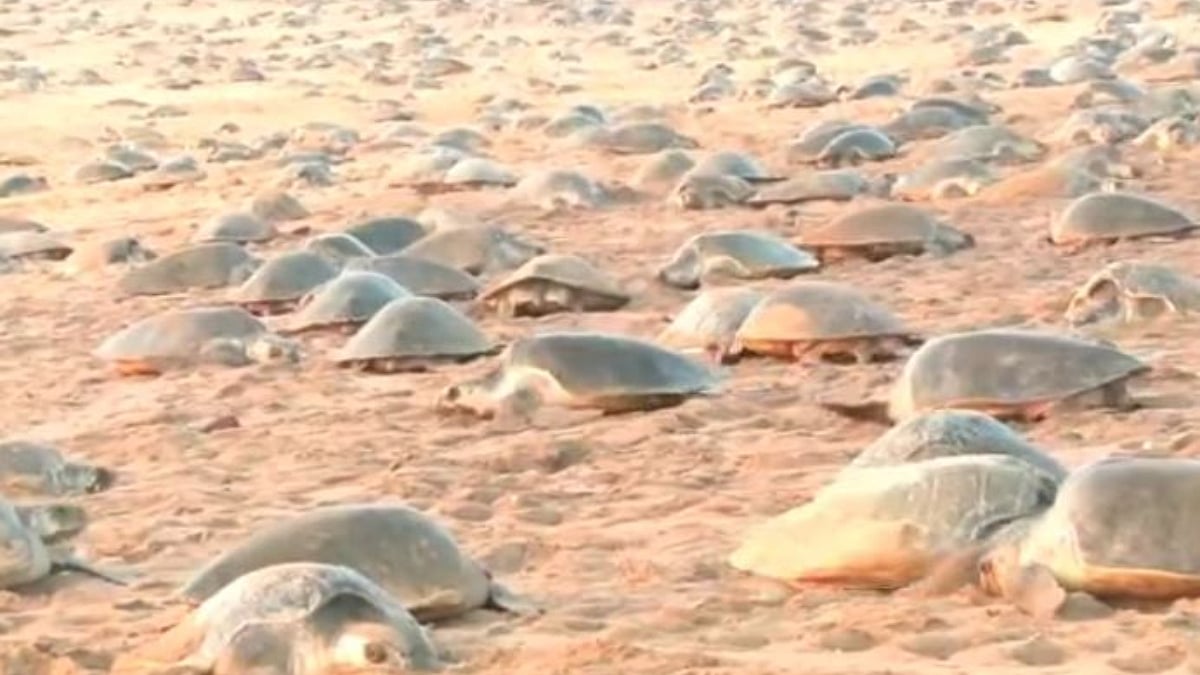Olive Ridley hatchlings in Odisha show skewed sex ratios amid rising temperatures | File Photo
Bhubaneswar: Rising temperatures may be skewing Olive Ridley turtle hatchling sex ratios towards females at Odisha’s Rushikulya River mouth, suggests a recent study. Researchers, who monitored mass nesting events over 15 years, observed a consistent female bias among hatchlings.
Olive Ridleys engage in large-scale mass nesting, or arribadas, only in Central America and India’s east coast. Odisha, home to major nesting sites at Gahirmatha and Rushikulya, harbors a genetically distinct and possibly ancestral population.
“Long-term monitoring is vital for tracking population trends, predicting climate impacts, and informing conservation,” said Kartik Shanker, an Olive Ridley expert.
In reptiles like turtles, nest temperature determines hatchling sex; higher temperatures generally produce more females. Monitoring Sea Turtles in India 2008–2024, the study tracked nest temperatures and hatchling sex ratios through gonad histology at Rushikulya.
Findings revealed that about 71% of hatchlings from arribadas were female, with some years showing stronger female biases linked to warmer nest temperatures. However, occasional male-biased ratios were also recorded.
Researchers identified the pivotal temperature for this population and aim to refine long-term trends by incorporating embryo growth models and more extensive temperature data. Since 2008, the Dakshin Foundation and the Centre for Ecological Sciences at IISc Bangalore have been monitoring Olive Ridleys in collaboration with the Odisha Forest Department. Mass nesting at Rushikulya has occurred almost every year, with an estimated one to two lakh turtles coming ashore annually, suggesting a stable or even growing local population.
